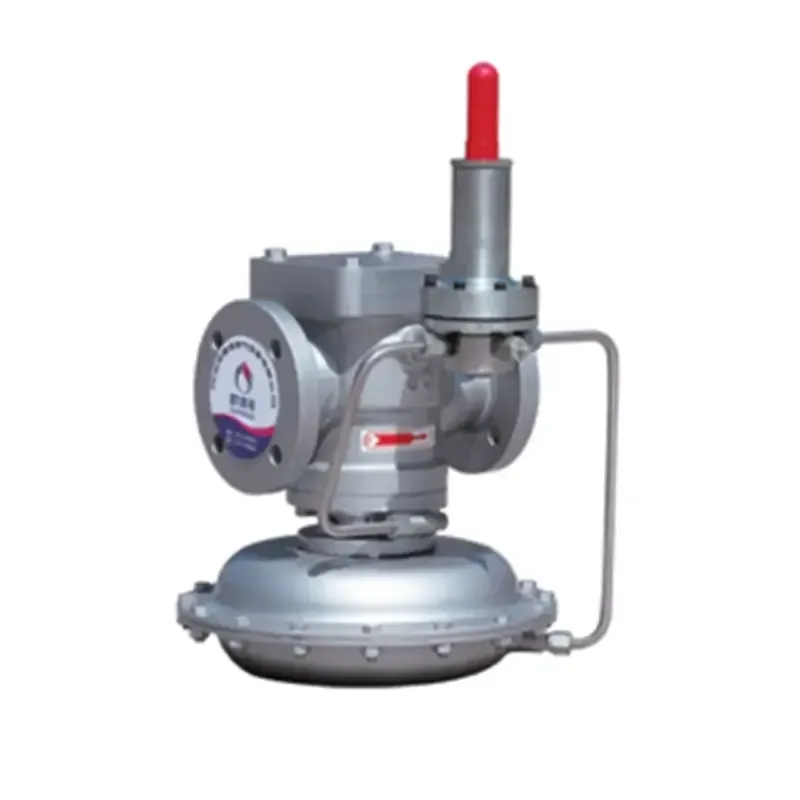
Dec . 11, 2024 11:52
Back to list
high pressure regulators
Understanding High Pressure Regulators Essential Components in Fluid Control Systems
High pressure regulators are critical devices used in various industries to manage and control the pressure of gases or liquids within a system. These regulators play a pivotal role in ensuring safety, efficiency, and reliability in fluid control applications. This article delves into the fundamental aspects of high pressure regulators, their functions, types, applications, and the significant considerations to keep in mind when selecting and using them.
What is a High Pressure Regulator?
A high pressure regulator is designed to reduce the high inlet pressure of gas or liquid to a lower, usable outlet pressure. These devices are crucial in applications where pressure needs to be monitored and maintained within specified limits, ensuring optimal operation of equipment that relies on controlled fluid dynamics. The working principle of a high pressure regulator involves a sensing mechanism to detect the outlet pressure, a means to throttle flow, and a spring-loaded diaphragm system that adjusts the flow rates as required.
Functions of High Pressure Regulators
The primary function of a high pressure regulator is to maintain a consistent outlet pressure, which is vital for various processes. This control is essential in preventing damage to equipment, promoting efficiency, and ensuring safety. Some key functions include
1. Pressure Control Regulators maintain the set pressure despite varying inlet pressures and flow demands, ensuring that processes operate smoothly and effectively. 2. Flow Regulation They manage the flow of gas or liquid, adapting to changes in demand while holding outlet pressure stable.
3. Safety Features Many high pressure regulators are designed with safety mechanisms, including pressure relief valves that prevent catastrophic failure during unexpected pressure surges.
Types of High Pressure Regulators
High pressure regulators vary widely based on design, functionality, and application. Common types include
1. Single-Stage Regulators These regulators are simpler and reduce the pressure in one step. They are suitable for applications where the inlet pressure remains relatively constant.
2. Two-Stage Regulators More complex, these regulators first drop pressure using a high-pressure diaphragm and then regulate it again for finer control. They are ideal for applications with fluctuating inlet pressures.
3. Electronic Regulators Utilizing advanced technology, these regulators automate pressure control with sensors and actuators, allowing for precise adjustments and integration into larger control systems.
high pressure regulators

Applications of High Pressure Regulators
The applications of high pressure regulators span multiple industries, showcasing their versatility and importance. Some key applications include
- Medical Gas Delivery In healthcare, high pressure regulators control oxygen delivery systems, ensuring that patients receive the required flow rates and pressures safely.
- Industrial Manufacturing In manufacturing processes such as welding, cutting, or chemical processing, accurate pressure control is vital for operational efficiency and product quality.
- Natural Gas Distribution High pressure regulators are essential in gas pipelines, reducing high-pressure gas to safe levels for residential and commercial use.
Considerations When Selecting High Pressure Regulators
When choosing a high pressure regulator, several factors need attention to ensure optimal performance
1. Inlet and Outlet Pressure Ratings Always verify that the regulator's specifications meet the operating pressure requirements of the application.
2. Flow Rate The regulator must be capable of delivering the necessary flow rate without causing pressure drops that could affect system performance.
3. Material Compatibility Ensure that the materials used in the regulator are compatible with the gas or liquid to prevent corrosion, contamination, or degradation.
4. Safety Features Look for regulators with integrated safety features, such as burst discs or pressure relief valves, to enhance operational safety.
In conclusion, high pressure regulators are indispensable components in any system involving gas or liquid control. Their ability to maintain consistent pressure and flow is essential across various applications, making them a critical consideration for engineers and technicians alike. Understanding their functionality, types, and selection criteria plays a significant role in ensuring the effectiveness and safety of fluid control systems.
Latest news
-
Safety Valve Spring-Loaded Design Overpressure ProtectionNewsJul.25,2025
-
Precision Voltage Regulator AC5 Accuracy Grade PerformanceNewsJul.25,2025
-
Natural Gas Pressure Regulating Skid Industrial Pipeline ApplicationsNewsJul.25,2025
-
Natural Gas Filter Stainless Steel Mesh Element DesignNewsJul.25,2025
-
Gas Pressure Regulator Valve Direct-Acting Spring-Loaded DesignNewsJul.25,2025
-
Decompression Equipment Multi-Stage Heat Exchange System DesignNewsJul.25,2025

